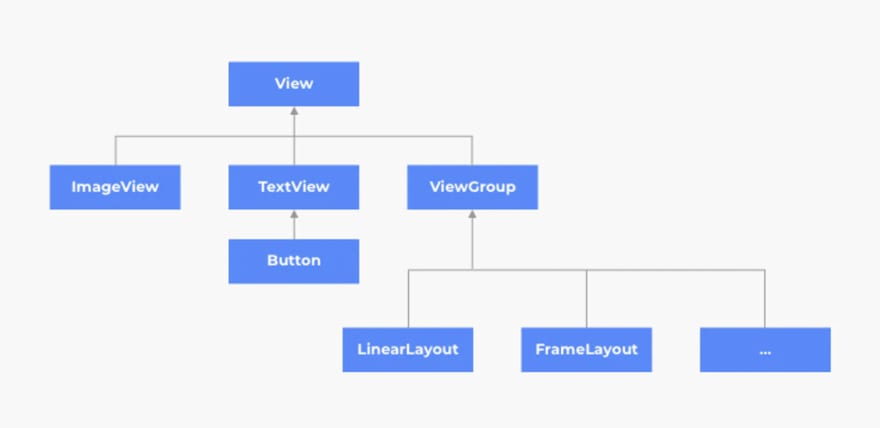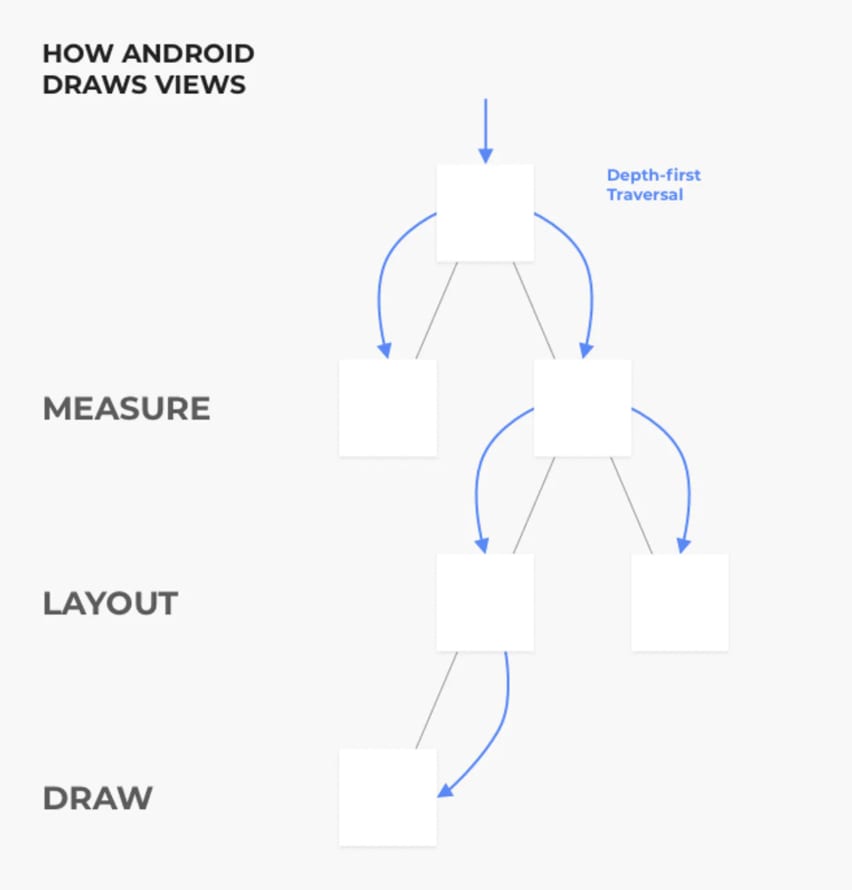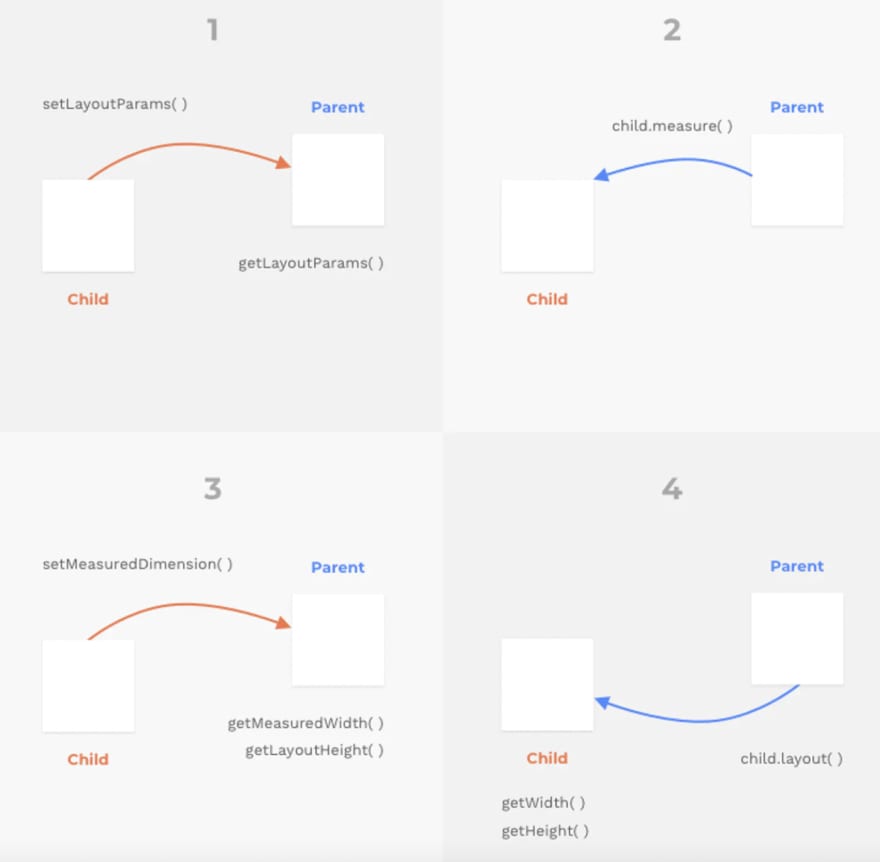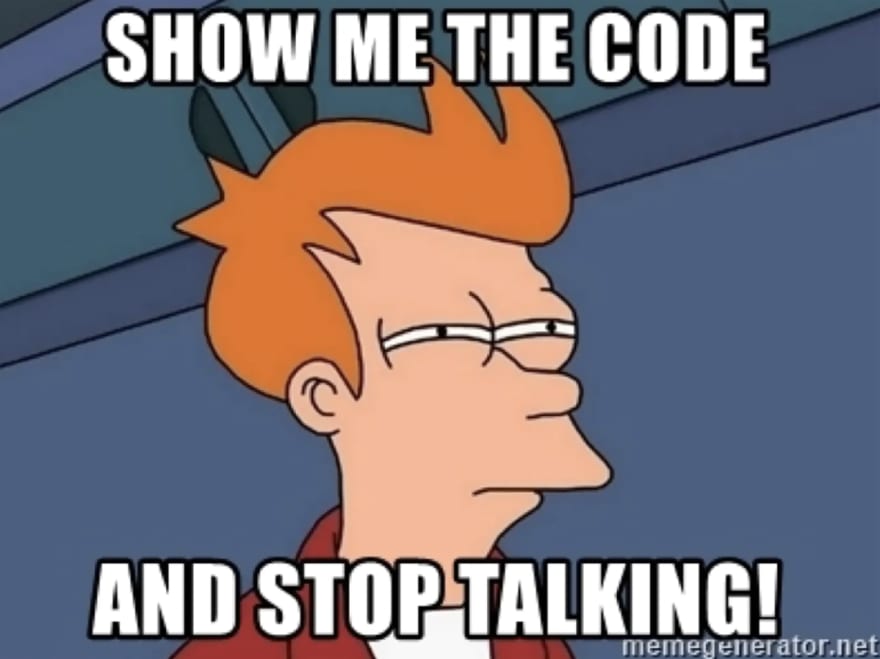- Creating Custom Views in Android
- Defining Important Terms
- What is Android View?
- What is a ViewGroup?
- What is a Custom View?
- Implementation Methods
- How Android Draws Views
- The Measuring & Layout Stage
- Drawing Stage
- Creating a Custom View
- The Pros & Cons of Implementing Custom Views
- The Pros
- The Cons
- Final Words
- How to create custom views in android?
Creating Custom Views in Android
The Android platform offers a large range of user interface widgets that are sufficient for the needs of most applications. These widgets are great and certainly provide us with functional and appealing end products, but sometimes us software developers like to think outside of the box and develop our own custom interfaces. What is the best way to approach this type of creativity? By building a custom View!
Defining Important Terms
To begin, we’ll define some basic terminology for a better understanding.
What is Android View?
Android View is the base class for building a user interface giving developers the opportunity to create complex designs. The View occupies a rectangular area on the screen, where it’s responsible for measuring, laying out and drawing itself along with its child elements. In addition, a View handles all user event inputs.
What is a ViewGroup?
A ViewGroup is a special view that is able to contain other Views (children) and define its own layout properties. It is also a place where each subview can draw itself.
What is a Custom View?
Any View created outside of the Android base widget set can be referred to as a Custom View. This will be the main focus of the blog post.
Implementation Methods
There are a lot of different ways to implement custom Views and the approach that is chosen depends on your needs. Let’s check out some methods:
Extending the existing Android widget — This method is useful when a large amount of setup code is required for your View and you want to reuse it in multiple locations. To avoid all of the messy code inside of your activity/fragments, you can extend the base widget and do all of the setup inside the constructor, therefore, it can be easily reused. This method is arguably the simplest approach to implementing custom Views.
Extending the Android base View — If you want to get innovative and do everything from scratch, this method is ideal. You will be drawing, measuring and planning all of the behaviour logic on your own.
Grouping existing Views together — Sometimes you have a set of widgets that you want to group together to create a whole new View. For instance, you have the Textview and the Button and you want to group them inside the LinearLayout. This is usually referred to as the Compound View. The benefits of doing this are:
An encapsulated and centralized logic
Ability to avoid code duplication
Reusability and modularity
How Android Draws Views
Let’s talk about how Android draws the Views. To begin, there are three phases that have to happen before the View ends up on the screen. These three phases are measure, layout, and draw. Each of these phases is the depth-first traversal of the View hierarchy going from parent to children. For each phase, there is a method that we can override and change, depending on our needs. The methods are onMeasure(), onLayout() and onDraw().
This process can be divided into two stages:
- The Measuring & Layout Stage
- The Drawing stage
The Measuring & Layout Stage
In this stage, we have the opportunity to tell the Android system the size we’d like our custom View to be, depending on the constraints provided by the parent.
The following numbered diagram displays how each View is measured by showing each step:
- The child View defines the LayoutParams programmatically or in the XML and the parent retrieves these values using the getLayoutParams().
- The parent calculates the MeasureSpecs and passes it down using the child.measure(). The Measurespecs contain the mode and the value. The three modes of measurement are: EXACTLY
- A precise size such as setting the width/height to 50dp or match_parent. AT_MOST
- The parent gives maximum size and the child adapts to it. This is the case for setting the width/height to the wrap_content. UNSPECIFIED
- There is no clear size, the child is free to play.
- The onMeasure() method is called with the MeasureSpecs parameters. In this method, the View calculates its desired width/height and sets it using the setMeasuredDimension. Keep in mind that the setMeasuredDimension method must be called inside measure otherwise it will cause a runtime exception.
- The next and final phase is the layout phase. In this phase, the parent calls the child.layout() and sets the final size and position of the child. When implementing your custom View, you should only override the onLayout() method if your View has other subviews.
To conclude, the measuring process is like a negotiation between a parent and child. The child calculates its desired width & height, but the parent is the one who makes the final call setting the position and size of its child.
Drawing Stage
The last and most important step in drawing a custom View is to override the onDraw() method. The Canvas is a base class that defines many methods for drawing text, bitmaps, lines and other graphic primitives.
Each parent will draw itself and then will request that each child do the same. An interesting side effect is when the parent draws itself first and it ends up on the bottom as its children are drawn on the top covering it.
Creating a Custom View
Now for the part that we’ve all been waiting for: the code. Let’s take a look at how to create a custom View using Kotlin. For this demonstration, we’ll be creating a Battery Meter to show the current status of a battery. The following diagram displays the three different statuses of a battery:
We can follow these steps in order to create a BatteryMeterView:
Create a new Android Studio project and add a new class called the BatteryMeterView.
Extend it with the View class and add constructors matching super.
Exit fullscreen mode
To prepare our drawing, we will declare some paint objects, colours and shapes.
Just like a basic widget, we want our View to have as little setup needed to initialize all of the properties with some default value.
Let’s create a companion object inside BatteryMeterView and add some constants to it.
Exit fullscreen mode
Before drawing the battery on the screen, we have to update its size and position. The best place to handle any size changes is inside the onSizeChanged method. We can follow these steps:
- Set the width and height of the content.
- Set the text size of battery value to half of the content height.
- Set the width of the battery head to 1/12 of the total width.
- Set the background rect position.
- Set the battery head rect position
- Set the battery level rect position.
Note: For the purpose of this example, we will use some hardcoded values for the padding and content offset.
Exit fullscreen mode
Now to draw the BatteryMeter we’ll start by overriding the onDraw() method.
- Draw the background of the View.
- Draw the battery head.
- Draw the container where our battery level will be placed.
Now if the battery is charging, we will draw a charging logo, otherwise, we will draw the text of the current battery value.
Keep in mind that the onDraw method is called 60 times per second (60fps) and putting any heavy operations and object creation inside it can cause bad performance in your app. To avoid this, we can create all of the objects inside constructors and if needed we can change the properties later on.
Exit fullscreen mode
Now to give our battery the ability to change at runtime we need to call the invalidate() method every time we update the View state. What invalidate does is it lets Android know that the view is dirty and that it needs to be redrawn. It is important to note that you need to be careful since calling the invalidate() too many times can cause problems.
Exit fullscreen mode
The final step is to add the battery View to your layout like this:
Exit fullscreen mode
All done. There you have it, a Battery Meter that you’ve created yourself.
For the project source code, you can check out my Github.
Now that we’ve walked through creating the Battery Meter, I encourage you to try creating your own custom View. It will definitely be fun!
The Pros & Cons of Implementing Custom Views
Before concluding, I’d like to share both the pros and cons of implementing custom Views. Just like any other implementation process, there are always both pros and cons but this shouldn’t discourage you from giving it a try.
The Pros
Custom view = Customization. The Android platform is vast but there are specific scenarios where the features or Views of Android don’t meet your needs, therefore, Custom View gives you the opportunity to build something of your own. When it comes to design and interaction, you have complete control since custom View provides endless options.
When developing large scale applications, code reusability is always welcome. Once you create a custom View, it can easily be reused in multiple locations across the application.
In specific scenarios, building custom view can squeeze some performance.
The Cons
Custom views are time-consuming and they can definitely be difficult to use until you get the hang of them.
There are a number of things you need to be aware of when implementing custom Views. Firstly, you have to ensure that you handle the font, text size, colour, shadows, highlight and style properly.
You also need to make sure that it works properly on all screen densities because Android canvas class draws in pixels not DP. Lastly, if you’re working with images, you’ll have to keep in mind the aspect ratio, zoom, scaling, etc.
You’ll also have to handle all kinds of click listeners and user interactions — single click, double click, long press, swipe and fling.
Final Words
I hope this tutorial has encouraged you to get creative with Android and make your own custom UI. If you have any questions or would like to discuss this topic, I’d be happy to do so.
Источник
How to create custom views in android?
Before diving into the process of creating a custom view, It would be worth stating why we may need to create custom views.
- Uniqueness: Create something that cannot be done by ordinary views.
- Optimisation: A lot of times we tend to add multiple views or constraints to create the desired view that can be optimized drastically in terms of draw, measure or layout time.
The best way to start would be to understand how android manages view groups and lays out views on the screen. Let us take a look at the diagram below.
onMeasure(widthMeasureSpec: Int, heightMeasureSpec: Int)
Every parent view passes a height and width constraint to its child view based on which the child view decides how big it wants to be. The child view then calls setMeasuredDimension() to store its measured width and height.
How are these constraints passed?
Android uses a 32-bit int called the measure spec to pack a dimension and its mode. The mode is a constraint and can be of 3 types:
- MeasureSpec.EXACTLY: A view should be absolutely the same size as dimension passed along with spec. Eg. layout_width= “100dp”, layout_width=”match_parent”,layout_weight=”1″.
- MeasureSpec.AT_MOST: A view can have maximum height/width of dimension passed. However, it can be also smaller if it wishes to be. Eg android:layout_width=”wrap_content”
- MeasureSpec.UNSPECIFIED: A view can be of any size. This is passed when we are using a ScrollView or ListView as our parent.
onLayout(changed: Boolean, left: Int, top: Int, right: Int, bottom: Int)
Android applies any offsets or margins and calls this method to inform your view about where exactly it would be placed on the screen. Unlike onMeasure, it is called only once during the traversal. So it is recommended to perform any complex calculations in this method.
onDraw(canvas: Canvas)
Finally, Android provides you with a 2D drawing surface i.e the canvas on which you can draw using a paint object.
The UI thread then passes display lists to render thread which does a lot of optimizations and finally GPU process the data passed to it by render thread.
How to define attributes for your view?
Declaring XML attributes is simple. You just need to add a declarable-style in your attrs.xml and declare a format for every attribute.
For instance, if you are creating a simple view which displays a circle with its label. Your attributes may look like this.
The same is referenced while creating a view in the following manner.
Now, we have to parse these attributes in your java or kotlin class.
- Create your view class which extends the android.view class
- Obtain a reference to the attributes declared in XML. While attrs is passed in the constructor, the second parameter is a reference to the styleable we just declared. The latter two are used for getting default style attributes in theme or supplying a default style attributes.
- Parsing the attribute arguments
Android automatically handles the process of converting dp or sp to the right amount of pixels according to screen size when parsing a dimension attribute. But, You need to ensure that the fallback value is converted to appropriate pixel value since android returns fallback value without any conversions if an attribute value is not defined in XML.
While parsing all other attributes is quite straightforward. I will brief you about how to parse flags. Declaring flags attributes can be really useful sometimes since we can check for multiple properties using a single attribute. This is the same way android handles the visibility flag.
colorType here is an integer which represents a flagSet. Now, since every bit in an integer can be used to represent an indication. We can check if a flag exists and perform our operations accordingly. To check if a flag type stroke exits, we can simply perform an or operation on flagSet with the stroke value. If the result stays the same that means the flag actually exists in the flagSet.
- Finally, recycle the typed array to be used by the later caller.
Initialising your objects
It is always better to initialize your paint and path objects or other variables in the constructor itself. Since declaring it any other traversal method may result in the meaningless creation of objects again and again.
Calculating your view size
Calculating view size can be really challenging sometimes. You have to make sure that your view does not take any extra pixel or request any less pixel as it may end up showing extra white space or not showing complete view respectively. These are the basic steps that you need to follow to calculate the size of your view.
- Calculate how much width and height your view requires. For instance, if you are drawing a simple circle with its label below the circle. The suggested width would be :
(circle diameter+ any extra width if occupied by the label). - Calculate the desired width by adding the suggested width with paddingStart and paddingEnd. Similarly, desiredHeight would be suggested height plus paddingTop & paddingBottom.
- Calculate actual size respecting the constraints. To calculate this, you simply need to pass measure spec passed to you in onMeasure() and your desired dimension in this method called resolveSize(). This method would tell you closest possible dimension to your desired width or height while still respecting its parent’s constraints.
- Most importantly, you need to set the final width and height in onMeasure method by calling setMeasuredDimension(measuredWidth,measuredHeight) to store the measured width and height of this view otherwise, you might see your view crashing with an IllegalStateException.
Positioning your views
We can position our child views by using the onLayoutMethod. The code simply may involve iterating over any child views and assigning them a left, top, right and a bottom bound depending on measured widths and heights.
Drawing your view
Before using the canvas there are few things that we need to understand:
- Paint: The Paint class holds the style and color information about how to draw geometries, text, and bitmaps. Here is how we create a paint object.
You can read about more about the properties here.
- Drawing Shapes: You can directly draw shapes like a line, arc, circle etc on the canvas. Let us take a look at the diagram below to gain a better understanding.
Using Paths: Drawing complex shapes with the above methods may get a bit complex so android offers a Path class. With the Path class, you can imagine that you are holding a pen and you can draw a shape, then maybe move to a different position and draw another shape. Finally, when you are done creating a path. You can simply draw the path on the canvas like this. Also, when using paths you can also use different path effects (discussed below in detail). Below, is an example of the shape created using paths.
- Path Effects: If you also apply a Corner path effect to your paint object with a certain radius the polygon will look like this. You can also use other path effects like DashPathEffect, DiscretePath etc. To combine two different path effects you can use the ComposePathEffect.
bitmap: Bitmap that you want to draw on canvas
src: It takes a rect object which specifies the portion of the bitmap you want to draw. This can be null if you want to draw the complete bitmap.
dest: A rect object which tells how much area do you want to cover on the canvas with the bitmap
paint: The paint object with which you want to draw the bitmap
Android automatically does all the necessary scaling or translation to fit the source on destination area.
You can also draw drawables on canvas.
Before drawing a drawable, you would need to set bounds to your drawable. The left, top, right and bottom describe the drawable’s size and its position on the canvas. You can find the preferred size for Drawables using getIntrinsicHeight() and getIntrinsicWidth() methods and decide bounds accordingly.
Drawing Texts: Drawing texts can be a bit of pain. Not the drawing itself, but the alignment or measurement of text. This occurs because different characters have different heights and to make it more worse there can be different typefaces too. So to measure a text’s height you would need to calculate specific text bounds for your text like this.
Then, the rect object passed in the end would then contain the text bounds of actual text to be drawn. This way you can calculate the actual height of text to be drawn and set a correct baseline y for your text. To calculate the width of your text you should use textPaint.measureText() as it is more accurate than the width given by paint text bounds (because of the way these methods are implemented in skia library). Alternatively, for ensuring the text is centered horizontally on the canvas you can just set your paint’s alignment to TextAlign.CENTER and pass center point of your canvas in the x coordinate.
Drawing multiline text: If you want to handle line breaks (\n) or If you have a fixed width to draw a text you can use Static Layout or Dynamic Layout. This would automatically handle all the word breaks or line breaks and also tell you how much height would be needed to draw a text in given width.
- Saving & Restoring Canvas: As you might have noticed, we need to save the canvas and translate it before drawing on it and finally we have to restore the canvas. A lot of times we need to draw something with a different setting such as rotating the canvas, translating it, or clipping a certain part of canvas while drawing a shape. In this case, we can call canvas.save() which would save our current canvas settings on a stack. After this, we change canvas settings ( translation etc) and then draw whatever we want to with these settings. Finally, when we are done drawing we can call canvas.restore() which would restore canvas to the previous configuration that we had saved.
- Handling User Inputs: Finally, you have created your own custom view using XML attributes, BUT what if you want to change any property at runtime such as the radius of the circle, text color etc. You would need to inform Android API’s to reflect the changes. Now, if any change in property affects the size of your view you will set the variable and call requestLayout() which would recalculate your view’s size and redraw it. However, if a property like a text color is changed you would only need to redraw it with new text paint color and in this case, it would be wise to just call invalidate().
Additional Note: Now if your view has a lot of attributes, there may be a lot of times you would have to write invalidate()/requestLayout after every setter. This problem can be solved by using kotlin’s delegates. Let us take a look a the example below to be more clear.
Now, If I know that a property if changed should only redraw the view, I would initialize it using OnValidateProp but if it can affect the size of the view I would initialize by creating a new OnLayoutProp delegate.
Finally! You can start by creating your own custom views. If you are interested to see what an actual custom view code looks like. You can check out the library that I just published. It displays steps along with the descriptions and covers most of the things that I have discussed in this article.
Источник













